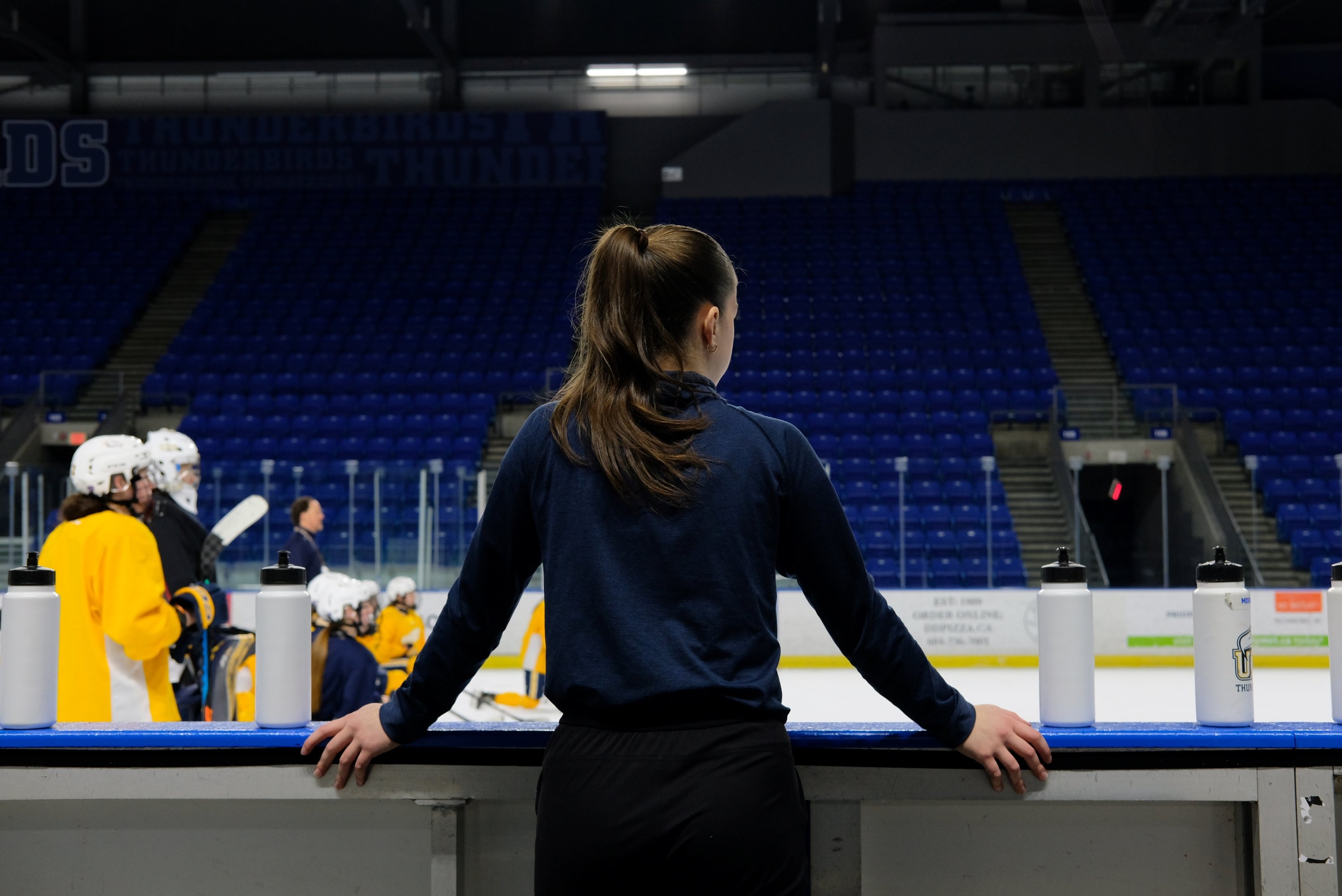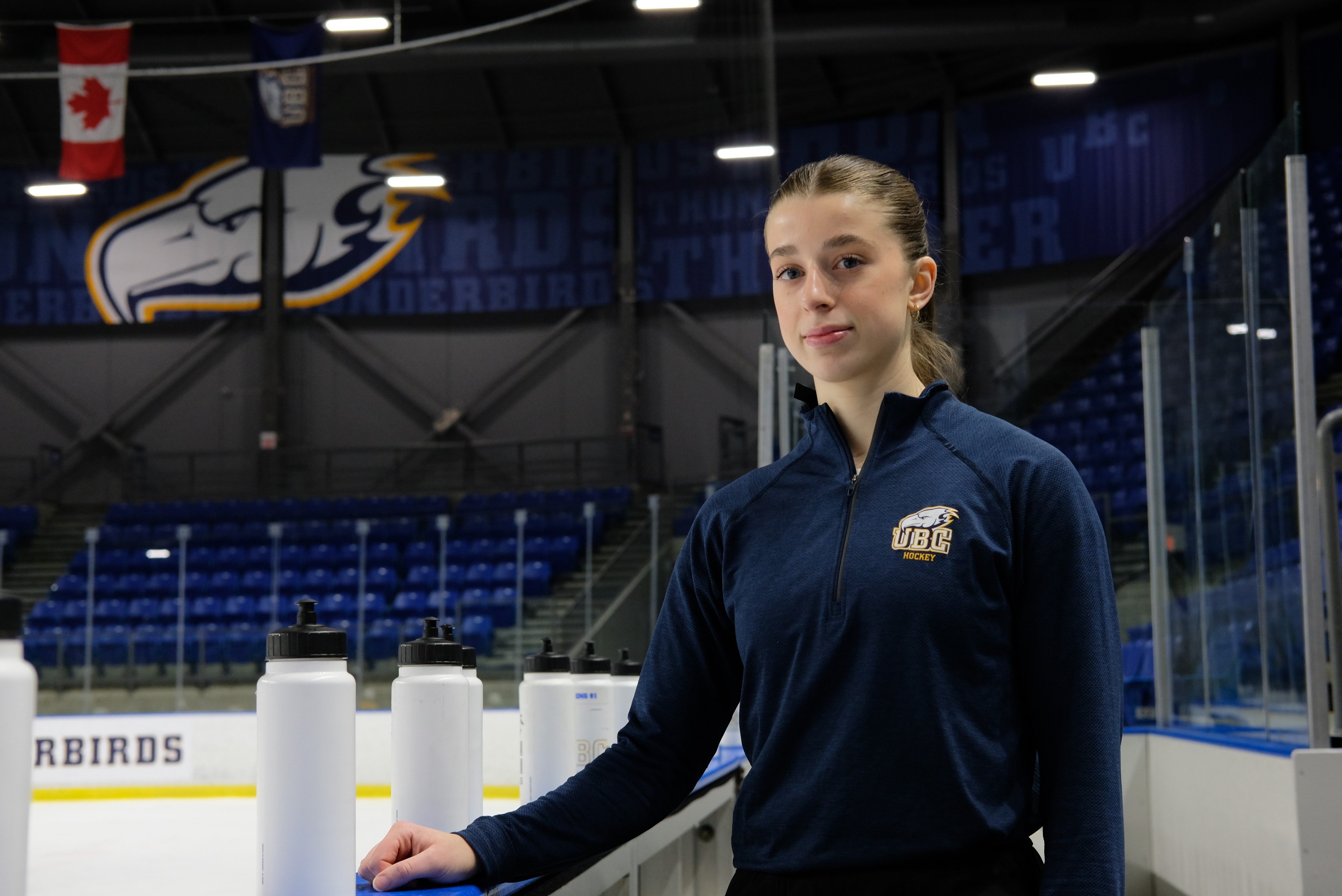
When thinking about women in sports, a student trainer may not be the first person that comes to mind. But, Cristina Captanio's work as lead student trainer is essential to the success of UBC’s women’s hockey team.
The third-year kinesiology student dedicates close to 40 hours a week to attending all practices and games (including away matches) with her medical supplies and monitors for sports-related injuries that may occur. She is also the point person to communicate with athletic therapists and doctors when a player gets injured.
“I like to explain it as like the lifeguard of sports … You're like a first responder to any injuries that would happen in sport,” she said.
Capitanio loves the work but she didn’t always think she’d be in her current position.
Although the Burnaby native grew up playing soccer and dancing competitively, it was a sports therapy course in high school that piqued her interest for a career in the sports industry.
“I had no idea there was any such thing as an athletic trainer in sports [before that],” she said.
After enjoying the work as a trainer taping football athletes during high school, Capitanio changed her prospective degree from science to kinesiology. When scrolling through Instagram in 2020, she came across a posting for student trainers at UBC.
“I was like, ‘Oh, I know how to do that.’ So I applied,” she said. Capitanio was one of the only incoming first years to be selected for the role — most are third and fourth year students.
Throughout her university trainer experience, Capitanio has had female presences to show her the ropes of the field. She started with the football team, under the supervision of athletic therapist Melissa Rogers, and stayed for two seasons before transitioning to women’s hockey in January 2022.
There, Alyssa Juma was the senior trainer and taught Capitanio the specificities of the Canada West champion team. Juma graduated in 2022 and passed on the lead athletic trainer role.
“She taught me a lot of what the standard is to be with that team,” Capitanio said.
In addition to football, Rogers acts as the athletic therapist for hockey and continues to support Capitanio.
“I feel like having a female athletic therapist overlooking what I'm doing gives me a bit more confidence and that she's always there to support my decisions, if I'm making any,” said Capitanio.
Despite having positive female presences in the start of her career, roughly less than 20 per cent of head athletic trainers are women, according to a study of NCAA trainers in 2016. Female coaches are also minorities in sport. When it comes to a female team, the people behind the bench rarely reflect the players.
“In an environment where both coaches, [like] women’s hockey [at UBC], are male, sometimes you need that female presence there. So I like to view myself as someone that the girls can come and talk to not only about their injuries, but about anything,” Capitanio said.
She is happy to be that person for her team, but the statistics still influence her position.
“It really emphasizes the need for female leaders in sports.”
February 1 was National Girls and Women in Sports Day.



